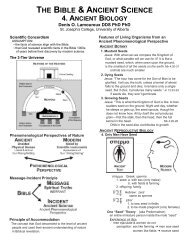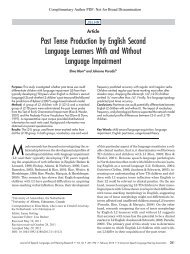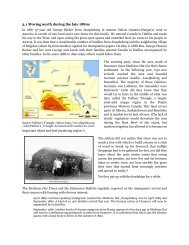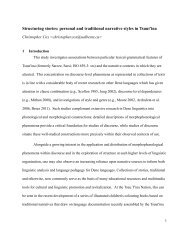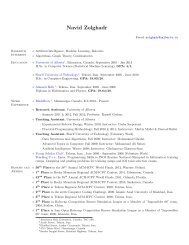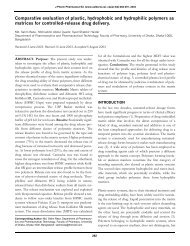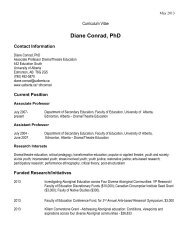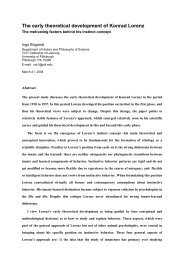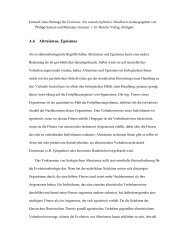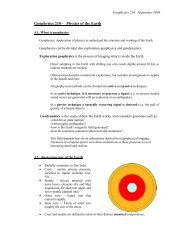Processing of Primary Fischer-Tropsch Products - University of Alberta
Processing of Primary Fischer-Tropsch Products - University of Alberta
Processing of Primary Fischer-Tropsch Products - University of Alberta
Create successful ePaper yourself
Turn your PDF publications into a flip-book with our unique Google optimized e-Paper software.
lower. A process scheme similar to that used with petroleum derived waxes and<br />
suitable for the catalytic dewaxing <strong>of</strong> FT Wax is shown in Fig. 5.<br />
Wax ..] Catalytic ~ Hydr<strong>of</strong>inishing |<br />
"l Dewaxing Unit I I I<br />
l<br />
q<br />
Vac.<br />
Dist.<br />
Figure 5 Process scheme for the production <strong>of</strong> synthetic base oils from wax<br />
"l<br />
I<br />
Naphtha<br />
Diesel<br />
____~) Base Oils<br />
.~ Heavy Base<br />
Oil<br />
The catalytic dewaxing route to lubricant base oils is becoming the<br />
preferred processing option due to the lower capital and operating costs<br />
compared to conventional solvent dewaxing. Recently introduced catalytic<br />
dewaxing technology, e.g. ChevronLummus Global's ISODEWAXING and<br />
ExxonMobil's MWI (Mobil Wax Isomerisation), makes converting FT wax to<br />
base oils more economical than ever before.<br />
6.3 Hydroprocesssing catalysts for LTFT primary products<br />
6.3.1 Basic concepts<br />
Although the type <strong>of</strong> hydrocracker feed from a FT process differs from the<br />
normal refinery hydrocracker feed, e.g. VGO, the basic hydrocracking<br />
mechanism is the same and standard hydrocracking catalysts can be used. As in a<br />
refinery hydrocracking process, the choice <strong>of</strong> catalyst will depend on the<br />
required product slate. When high middle distillate selectivity is desired<br />
amorphous carriers would be chosen while, on the other hand, when maximum<br />
kerosene and naphtha selectivity are wanted, a mixed zeolite/amorphous carrier<br />
will probably be used.<br />
Commercial hydrocracking catalysts are dual function catalysts,<br />
containing a hydrogenation/dehydrogenation function, provided by the active<br />
metal(s) and an acidic function derived from the carrier, typically amorphous<br />
silica-alumina or crystalline silica-alumina, i.e. zeolites.<br />
According to generally accepted hydrocracking theory, the active metal<br />
sites promote dehydrogenation <strong>of</strong> the paraffins to olefins [76]. These are then<br />
509



